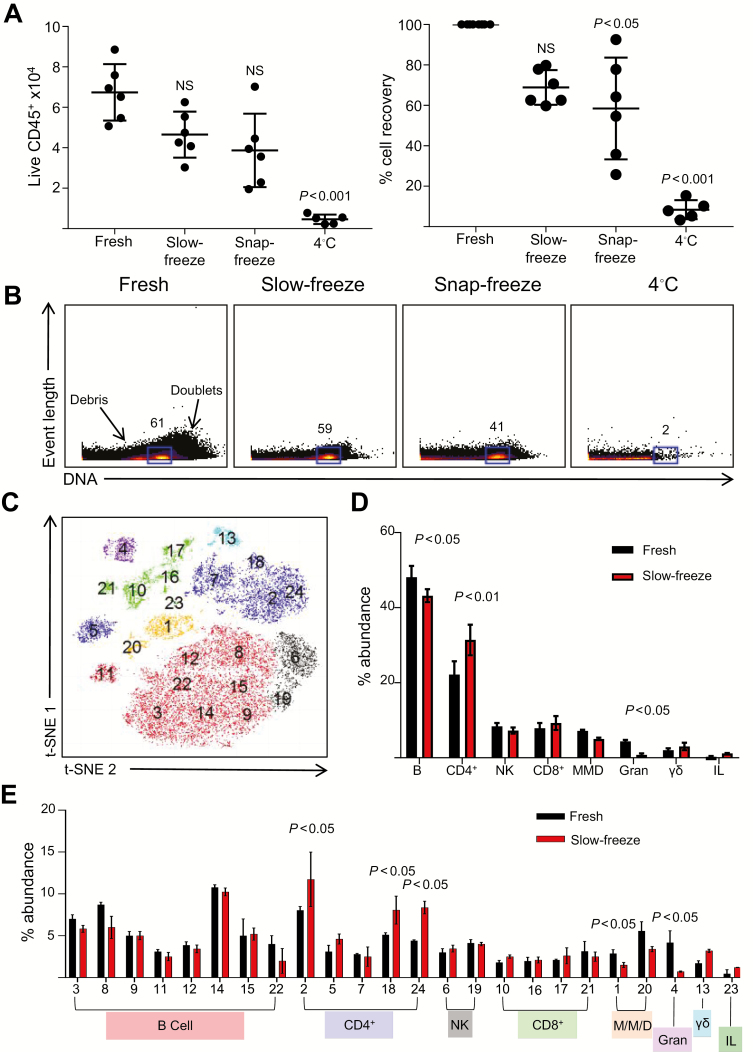FIGURE 3.
Slow-freezing allows for long-term storage of intestinal biopsies and provides robust recovery of viable immune cells. Six colonic biopsies were either processed immediately after harvest or after storage by slow-freezing, snap-freezing, or overnight storage at 4°C. A, Total CD45positive events acquired and viable cell recovery after storage under indicated conditions (mean ± SD from 5–6 donors, analyzed using the Kruskal-Wallis test followed by Dunn’s multiple comparisons test). Percentage cell recovery was calculated as yield derived from frozen biopsies as a proportion of cells derived from fresh biopsies, in paired samples. B, Representative event length vs DNA stains of cells under the indicated conditions. Gates display percentages of nucleated cells. Labels indicate doublets (high DNA staining) or cellular fragments/debris (low DNA staining). C, t-SNE map of live CD45positive events derived from fresh and slow-frozen biopsies. Numbers display individual subsets identified by ClusterX analysis. Colors of clusters represent lineages, as displayed in (D). D, Percentage abundance of the 8 major lineages identified previously, derived from the phenotype of subsets identified in (C). E, Percentage abundance of the individual subsets identified in (C)/(D), derived from either fresh or slow-frozen biopsies.

